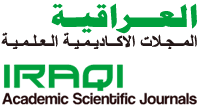The technology of religious transformations in Andalusian poetry, an analytical study.
Abstract
This research represents one of the serious attempts based on Andalusian poetry to study (religious transformations in Andalusian poetry: an analytical study of selected models). Our choice of this research is due to several reasons, including that religious transformations are considered one of the human phenomena that encompass all human activities in general and religious ones in particular. They contribute to the advancement of thought and language, and reveal the emotional states and psychological conflicts that afflict poets throughout their lives, which are reflected in their poetic productions. The importance of this research is highlighted in its exploration of religious transformations in Andalusian poetry and the creative methods encompassed by these transformations. The research plan required dividing it into an introduction, two chapters, and a conclusion. The introduction included five sections that served as a starting point for the study. The first section addressed "transformation at the linguistic and terminological level." The second section discussed "the overlap of the term with similar terms." The third section highlighted "the literary features of transformations in Andalusian poetry." The fourth section referred to "the motives for transformations in Andalusian poetry." The introduction concluded with the fifth section, "Types of religious transformations." The first section then examined "religious transformation in a single poetic text," followed by the second section, which addressed "religious transformation in more than one poetic text." The research concluded with the results of the research. The research encountered difficulty in exploring the phenomenon of religious transformations in the poetry collections of Andalusian poets. Not all poets incorporated this phenomenon into their poetic productions, which necessitated referring to them, examining them closely, and selecting appropriate texts. The research adopted an analytical approach to clarify the rhetorical and linguistic styles, aesthetic values, and religious manifestations mfound in the poetic examples


